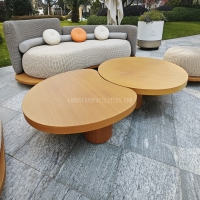Welcome to the website for landscape facilities products and knowledge.
How does polypropylene handle heavy rain in a landscape tree box?
Polypropylene tree boxes are increasingly popular in urban landscaping due to their exceptional durability and weather resistance. When exposed to heavy rain, these planters demonstrate superior performance compared to traditional materials like wood or concrete.
The secret lies in polypropylene's hydrophobic properties, which prevent water absorption and minimize swelling or degradation. Unlike porous materials, polypropylene won't crack or rot when saturated. The material's structural integrity remains intact even during prolonged downpours.
For drainage, polypropylene tree boxes typically feature:
1. Strategically placed drainage holes that prevent waterlogging
2. Built-in channels that direct excess water away from root systems
3. Optional permeable base layers for enhanced water management
The lightweight yet sturdy nature of polypropylene allows these planters to withstand hydrostatic pressure from heavy rainfall without deformation. Many designs incorporate raised feet or elevated bases to facilitate proper runoff.
Urban planners favor polypropylene tree boxes because they:
- Maintain consistent performance across temperature extremes
- Resist corrosion from acidic rainwater
- Require minimal maintenance compared to other materials
- Support healthy tree growth by preventing root rot
For optimal performance in heavy rain conditions, experts recommend selecting polypropylene boxes with reinforced walls and checking that drainage systems meet local precipitation standards. Proper installation with appropriate soil mixtures further enhances their weather resistance.
These planters represent a sustainable solution for cities facing increasing rainfall intensity due to climate change, combining environmental benefits with long-term cost savings.
Related search:

Recommendation
Elliptical metal outdoor table with nested design, resembling wood grain, round table